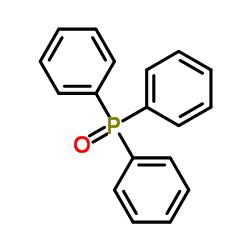Characterization of spectroscopic of Pr(DBM)3(TPPO)2 containing poly(methyl methacrylate).
Biao Chen, Ning Dong, Jie Xu, Hao Liang, Qijin Zhang, Min Yin, Zhi Zheng
Index: Spectrochim. Acta. A. Mol. Biomol. Spectrosc. 63(2) , 289-94, (2006)
Full Text: HTML
Abstract
The absorption and fluorescence spectra of Pr(DBM)3(TPPO)2 (DBM: dibenzoylmethane, TPPO: triphenylphosphine oxide) containing poly(methyl methacrylate) (PMMA) were measured. The energy levels are assigned and analyzed in terms of the free-ion Hamiltonian model. From the data available in the absorption spectrum, various spectroscopic parameters such as the spherically symmetric part of the free-ion Hamiltonian (E(AVG)), Slater-Condon (F2, F4, F6), spin-orbit interaction (zeta), Judd-Ofelt (omega2, omega4, omega6) parameters and the reduced matrix elements are derived. The radiative properties of Pr(DBM)3(TPPO)2 containing PMMA were also predicted according to the Judd-Ofelt theory. The values of the fluorescence branching ratio and the emission cross section of 3P0 --> 3F2 fluorescence transition revealed that Pr(DBM)3(TPPO)2 containing PMMA is an efficient luminescent material.
Related Compounds
| Structure | Name/CAS No. | Molecular Formula | Articles |
|---|---|---|---|
 |
Triphenylphosphine oxide
CAS:791-28-6 |
C18H15OP |
|
Toward prediction of alkane/water partition coefficients.
2008-07-10 [J. Med. Chem. 51 , 3720-30, (2008)] |
|
Mechanism of lipid peroxidation in cancer cells in response ...
1993-01-01 [Anticancer Res. 13(1) , 193-9, (1993)] |
|
Solubilization of triphenylamine, triphenylphosphine, triphe...
2011-12-01 [J. Colloid. Interface Sci. 364(1) , 163-9, (2011)] |
|
Structure of triphenylphosphine oxide hemihydrate.
1990-04-15 [Acta Crystallogr. C 46 ( Pt 4) , 715-7, (1990)] |
|
Acute toxicity to the golden apple snail and estimated bioco...
2000-07-01 [Bull. Environ. Contam. Toxicol. 65(1) , 104-11, (2000)] |